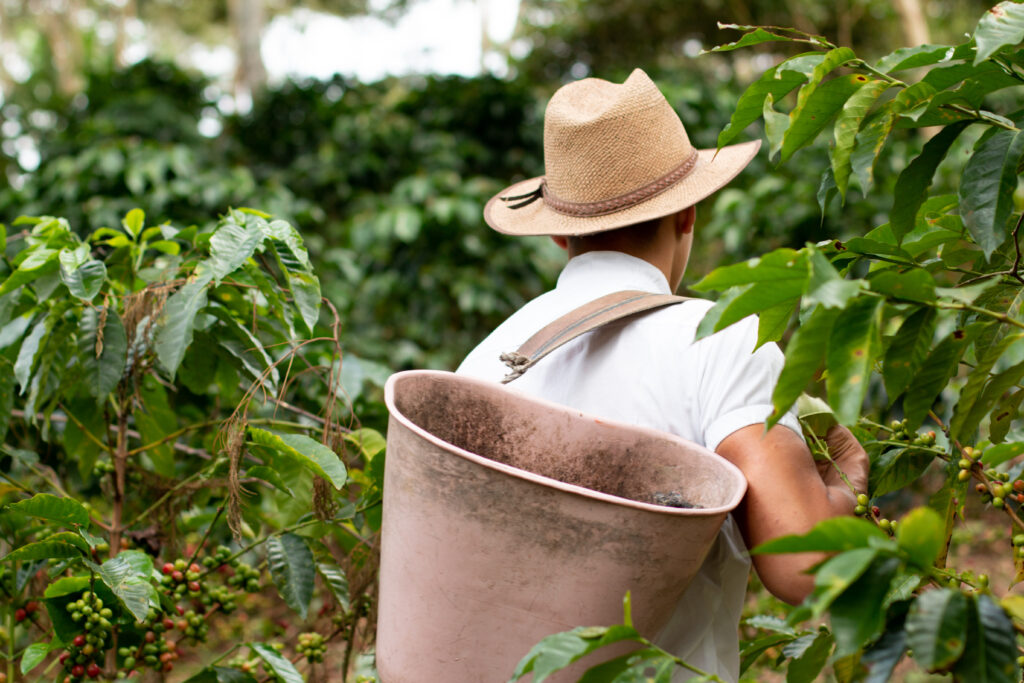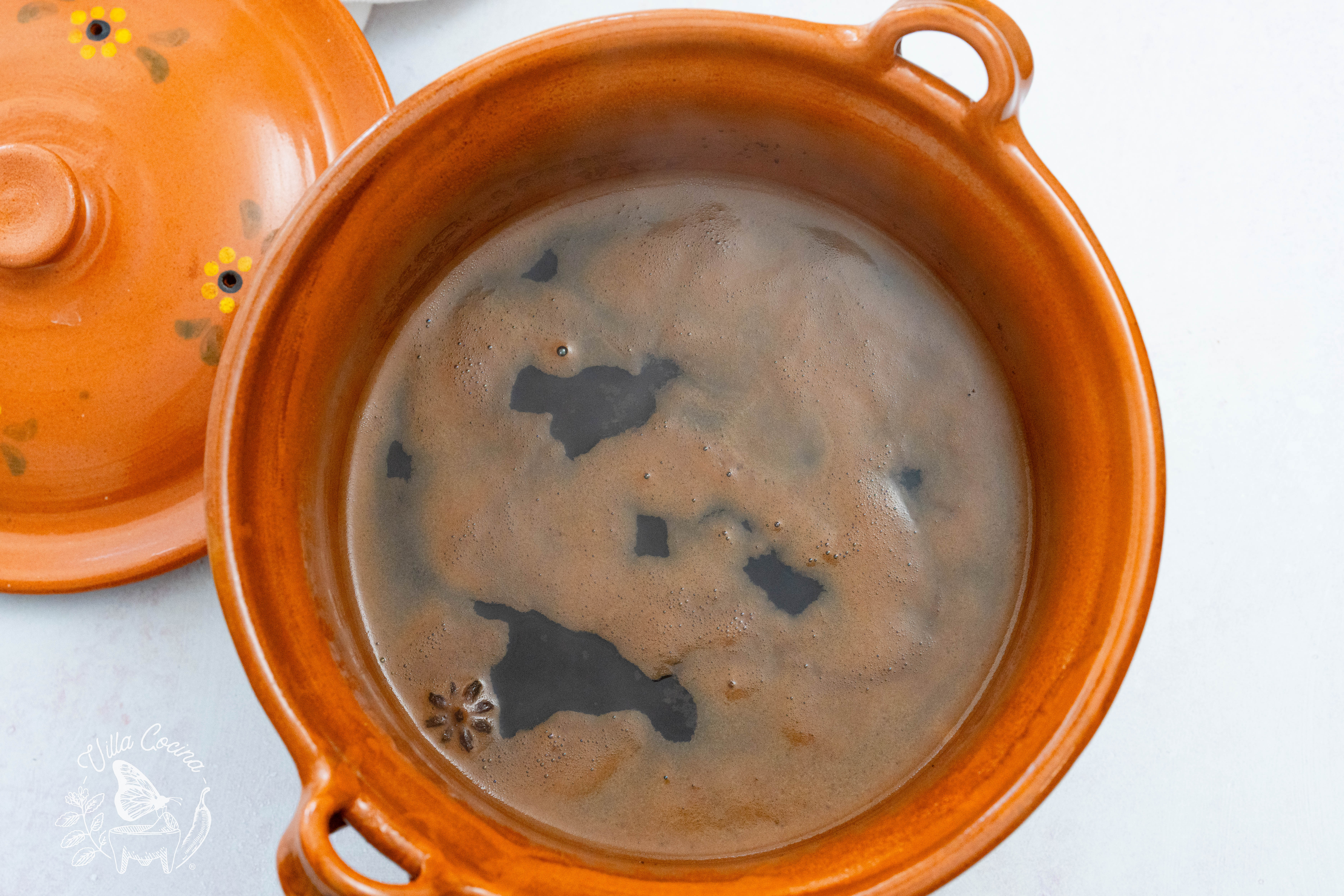Cafe de Olla (Mexican coffee)
Café de Olla is a beloved Mexican coffee infused with cinnamon, star anise, and cloves, then sweetened with piloncillo. Traditionally brewed in a clay pot, it absorbs earthy flavors for a warm, spiced experience.

Growing up, my parents didn’t let me drink coffee, but café de olla was always around. My first sip of coffee was actually a cappuccino at 23 years old, right as my 5 a.m. pastry shift began.
The first year Nelson visited Mexico, we arrived in Guadalajara and had breakfast at a roadside gordita stand the next morning. They served this coffee, and that was the moment I fell in love.
This is the only coffee I enjoy without milk; it feels like a warm hug. Any coffee lover knows the comfort of that first sip.
Adaptations
Traditionally, café de olla is brewed in a clay pot, but it’s easy to make at home without one—just use a stainless steel pot. On busy weekdays, an electric kettle works too. Watch the video for tips on making it with a kettle.
Finding piloncillo—a rich, unrefined cane sugar shaped into cones—can sometimes be challenging. It has a deep molasses-like color and flavor, making it special in traditional café de olla. If unavailable, brown sugar is a good substitute, or even regular sugar, though the molasses depth adds something extra.

As a type one diabetic, I prefer sweeteners derived from erythritol and monk fruit. These options are now widely available and have allowed me to enjoy my coffee.
Feeling adventurous? Try adding a twist of orange peel to the mix—it gives it a fresh, citrusy aroma. Who needs candles when you have this coffee brewing?
Cultural Heritage
Café de olla is believed to date back to the Mexican Revolution, providing warmth and energy to soldiers facing long days. Over time, it has become a beloved symbol of Mexican hospitality, often served at gatherings and celebrations.
This warm beverage is both soothing and comforting, often served at funerals to bring the community together during difficult times. Conversely, it is also enjoyed during celebrations such as Christmas and New Year’s, highlighting its significance in various aspects of life.
Mexico’s Coffee
Oaxaca is the leading coffee-producing state in Mexico, with its mountains providing the ideal environment for growing high-quality Arabica beans that offer bright and chocolaty notes. Additionally, Veracruz and Puebla also contribute significantly to the global coffee market.

Where to Find Clay Pots
Clay pots are vital in Mexican cuisine due to their excellent heat distribution, which enhances cooking. They require extra care, such as gradually warming them to prevent cracking from sudden temperature changes. Despite this, their unique ability to impart flavors and provide a traditional cooking experience makes them well worth the effort.
Having a clay pot not only showcases your cultural heritage but also imparts the “sazón” (flavor) of our ancestors, adding incomparable earthy tones to dishes. It’s essential to choose lead-free pots, certified by reputable organizations, and to cure them before use to ensure safety and optimal performance.

“Barro” simply means clay, and these cooking tools can be found at local farmers’ markets, particularly within Hispanic communities. For instance, La Vaquita Flea Market in Atlanta, GA, is a great place to search for one. You can also check your local Mexican grocery store or look online. Personally, I have brought several back from Mexico, and my mother has gifted me some as well.
Ingredients
- Cinnamon Stick (Canela): Warm, sweet, and slightly spicy, canela is a staple in Mexican cuisine. The Ceylon variety is preferred for its delicate sweetness.
- Star Anise: A star-shaped spice with warm, sweet, licorice-like flavor, often used to enhance both sweet and savory dishes.
- Cloves: Strong and aromatic, cloves add warmth to both sweet and savory dishes.
- Piloncillo: An unrefined cane sugar with rich, molasses-like flavor. Brown sugar works as a substitute, and monk fruit or stevia are good alternatives.
- Coffee: The flavor of coffee is shaped by its growing region and the roasting process. You can choose between Arabica beans, known for their smooth and mild flavor, and Robusta beans, which have a stronger, more bitter taste. Your selection will depend on personal preference and the flavor profile you enjoy most.

How to Make Cafe de Olla
In a large pot, bring water, cinnamon, star anise, cloves, and sugar to a boil, stirring until the sugar dissolves.

Stir in the coffee, turn off the heat, and let it steep for 5–10 minutes, adjusting the time based on your desired strength.

Pour the coffee through a strainer. Milk is optional, but it’s delicious as is.

Recipe Video Tutorial
Below is my easy to follow video tutorial on how to make this Café de Olla.
Enjoyed the video? Subscribe and tap the bell for updates on new recipes. Thank you for your support!
Store
To store leftover coffee effectively, first allow it to cool to room temperature. Then, transfer it to an airtight container, such as a glass jar, to minimize exposure to air. Store the container in the refrigerator for up to 3-4 days.
When you’re ready to enjoy your coffee, reheat it. To maintain its flavor, try to avoid reheating it more than once. Repeated heating can lead to a loss of quality and taste, so it’s best to heat only the portion you plan to drink.
Short-Reel Video
Watch how easy it is to make Cafe de Olla with this SHORT/Reel.
More Mexican Recipe You’ll love
- Champurrado
- Coconut Atole
- Atole de Nuez
- Red Chicken Tamales
- Green Pork Tamales
- Mexican Red Pork Tamales

Cafe de olla (Mexican coffee)
Ingredients
- 10 cups water
- 1 cinnamon stick , canela
- 1 whole star anise
- 4 whole cloves
- To taste sweetener, (piloncillo or 1/2 cup brown sugar)
- 1/2 cup ground coffee
Instructions
- Stir in the coffee, turn off the heat, and let it steep for 5–10 minutes, adjusting the time based on your desired strength.
- Pour the coffee through a strainer. Milk is optional, but it’s delicious as is.
Nutrition
Did you make this recipe?
Show some love! Tag @villacocinaofficial on Instagram and drop a 5-star review. Your support means everything—thanks!


Velma Roman
I haven’t made it but I can’t wait to do so. Love all the recipes
Villa Cocina
So much excitement! Thanks for the support.
Andrea
If I’m using Piloncillo, how much should I use?
Villa Cocina
If you’re using piloncillo, start with about 2 oz for a lightly sweet Café de Olla. Taste while the water is still simmering, before adding the coffee. If it needs more, simply add to taste—whatever feels good to your palate.